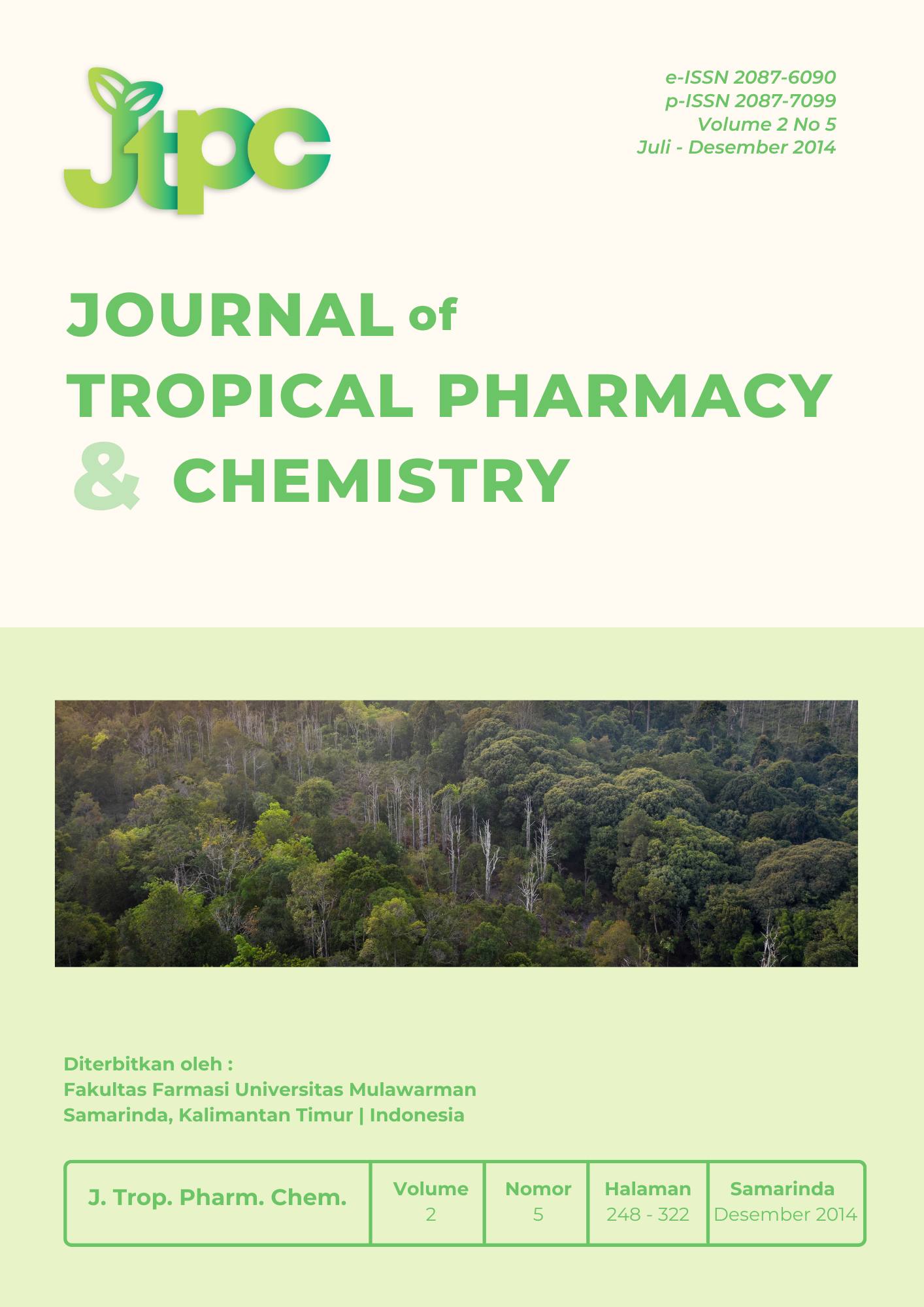Skrining Bakteri Simbion pada Lalat Buah (Drosophilla melanogaster) sebagai Kandidat Penghasil Senyawa Antibiotika
Keywords:
fruit flies, Drosophilla melanogaster, antibioticsAbstract
Now the emergence of bacterial resistance to antibiotics is a national and global issues that have a significant impact on public health. We report the screening of bacterial symbionts in fruit flies (Drosophilla melanogaster) as a producer of new antibiotic compounds. This study aims to get antibiotic-producing bacterial symbionts in fruit flies (Drosophilla melanogaster). In this study used methods of isolation, purification and antibacterial testing using four test bacteria (Escherichia coli, Staphylococcus aureus, Bacillus subtilis, and Salmonella thyposa). Isolation of fruit flies (Drosophilla melanogaster) that uses peptone solution prepared dilutions to 10-9 and then purification is done by scraping the bacteria on NA medium by repeatedly to obtain pure isolates and subsequently antibacterial test. The results showed that the bacterial isolation 10-8 and 10-9 dilutions allegedly produce antibiotic-producing compound while the antibacterial test using test bacteria showed that the compound obtained from the insulation in the fruit fly (Drosophilla melanogaster) showed the compound to inhibit the growth of bacteria Escherichia coli and Staphylococcus aureus.
Downloads
References
1.Anpalahan M & Darzins P. Vancomycin Resistant Enterococcus ingeriatrichospitals and long term care facilities: implications for practitioners. Australian Journal on Ageing. Vol. 20. 2001. No.2.pp.100102. [diakses 13 Mei 2010]
2.Baker E. Handbook of Bacteriological Technique. Second Edition. West Minter Medical School. London. Hal : 67-75
3.Buchanan RE, Gibbons NE. Bergey’s Manual Of Determinative Bacteriology, Eight Edition, Williams and Wilkins Company, Baltimore. 1974
4.Djide MN dan Sartini. Mikrobiologi Farmasi Dasar. Lembaga Penerbitan Universitas Hasanuddin. Makassar. 2008. Hal. 81-84, 247, 246, 322-323
5.Dana RK, dan Jacob M. Nature Antibiotic Resistance of Bacteria Isolated from Larvae Oil Fly Helaeomyia petrolei. Sekolah Ilmu Hayati. Universitas
Nebraska. Lincoln. 13 Maret 2000 [diakses 29 April 2010]
6.Darmawayasa IBG. Isolasi dan Identifikasi Bakteri Pendegradasi Lipid (lemak) pada Beberapa Tempat Pembuangan Limbah dan estuary DAM
Denpasar. Laboratorium Mikrobiologi Jurusan Biologi FMIPA. Universitas Udayana. Jurnal Bumi Lestari. Vol 8. No 2. Agustus 2008. Hal 122-127 [diakese 17 Januari 2011]
7.Ghislain F. Antibiotic Resistance In The EU-Science, Politics, and Policy. AgBioForum-Vol 3, Number 2&3. Pages 148-155. [diakses 13 Mei 2010]
8.Khalsoven. Laboratorium Data. Balai Penelitian Tanaman Jeruk dan Bali Subropika. The Pests od Crops in Indonesia. PT Ichtiar Baru-Van
Hoeven. Jakarta. 1981. Hal. 701
9.Lyudmila VK, dan Miller JP. Isolation and Identification of Bacteria Assosiated with Adult Laboratory Mexican Fruit Flies. Current Microbiology
An International Journal Springer-Verlag New York, vol.42.2001.Pp 290-294. [diakses 29 April 2010].
10.Ugbogu OC dan Nwachukwu NC. Isolation of Salmonella and Shigella species from house flies. African Journal of Biotechnologu Vol. 5, no.11. pp. 1090-1091. 2 June 2006. [diakses 29 April 2010]. Available online at http://www.academicjournals.org/AJB




